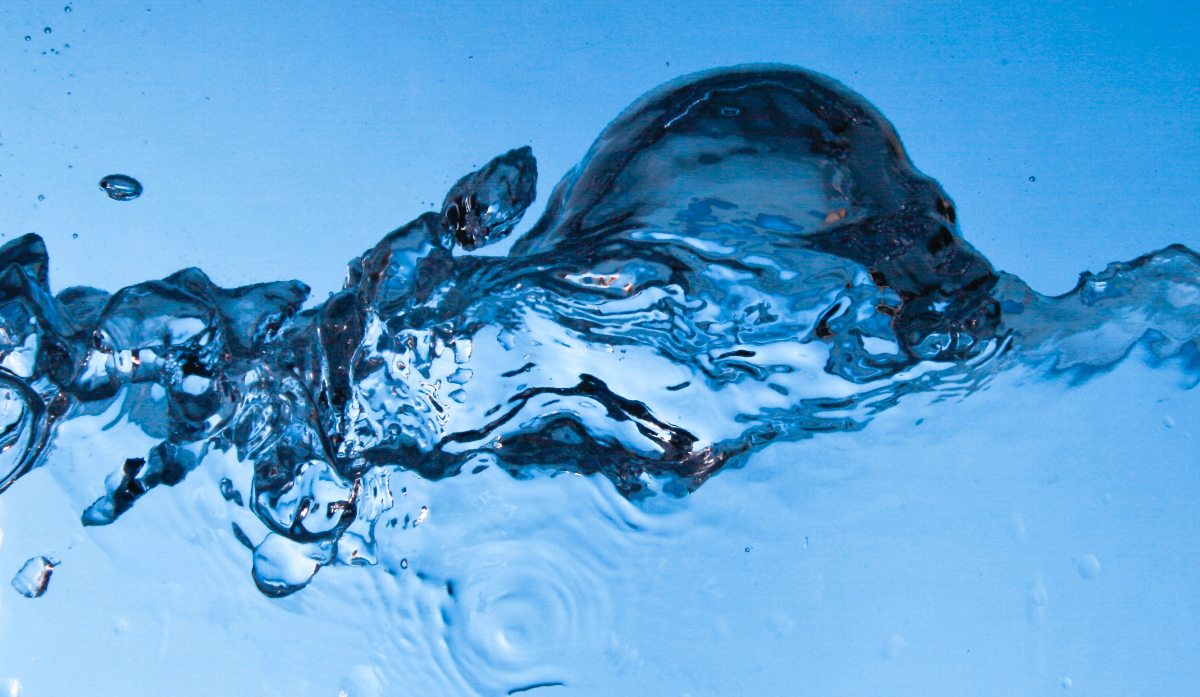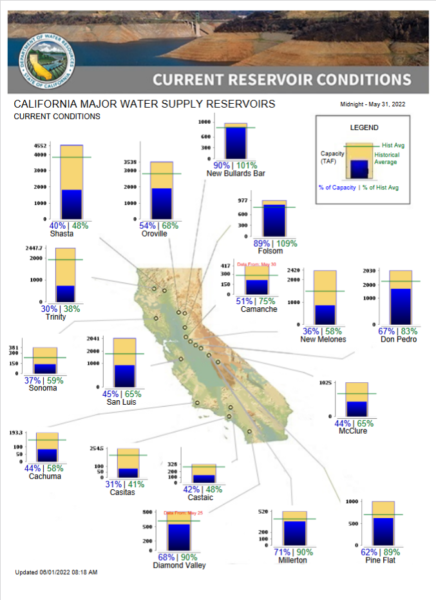Summer is here, well, not officially…
But as California prepares itself for the “business-end” of what is shaping up to be a long, hot summer, water operations managers are running out of options. Savvy CVOC operators along with their DWR counterparts can skillfully manipulate our CVP water system in a number of ways over the course of any WY, particularly during the flood season and the ramp-up to the irrigation season. But even that has limits; for at some point, no other options remain and the inevitable plunge in carryover reserves becomes unavoidable. The implications to future water quality and fisheries concerns over the next several months builds with each passing day as the carryover reserves in the CVP/SWP terminal reservoirs simply will not be available.
Northern CVP reservoir storage was 4.626 million acre-feet (MAF) as of Memorial Day. This is a little under 60% of the long-term storage average and about 638,000 acre-feet (AF) lower than it was on this same date last year. All major federal and State reservoirs are below their 15-year averages (e.g., Trinity – 44%, Shasta – 53%, New Melones – 61%, San Luis (federal) – 65%) for storage.
The notable exception, however, and this year’s anomaly (perhaps even the decade’s), is our redoubtable Folsom Reservoir. Yesterday’s storage was 865,000 AF, over a half-million AF more than it was on this same date last year. A quick check confirms that WY cumulative precipitation in the source area inflow watersheds above Folsom wasn’t abnormal; in fact Blue Canyon’s accumulated year-to-date precipitation is 97% of average (the ET/P↓ ratio for May is 272:1). Clearly, the reservoir did not (and is not) enjoying an overly favorable precipitation season, relative to other noteworthy hydroclimatologic variables. Moreover, the reservoir is not, and has not been “scrimping” on releases to the lower American River (we’ve been monitoring Nimbus Dam releases daily). Yesterday, in fact, Folsom Reservoir was releasing 1,819 cfs, only 8% below the 15-year median for Memorial Day; and that has been the case for much of the spring.
The fact remains, current storage in Folsom Reservoir is 111% of its average and the reservoir remains 89% full. Average daily inflows are calculated to be a little over 3,300 cfs but this value should be viewed as simply the numerical average over a descending 30-day sample size. Just to stay on Folsom Reservoir a moment longer… as of Memorial Day, the reservoir had actually added over 96,000 AF for the month of May alone. No other reservoir in California, let alone the western States can claim to be adding new carryover equivalent to 10% of its total reservoir capacity during this drought… except Folsom.
As for the rest of the State, the Sierra Nevada snowpack is essentially gone. Average SWE across California is less than 1 inch and this value as a percentage of the April 1st and normal value for this date are 2 and 6%, respectively.
The Northern Sierra Precipitation – 8 – Station Index stands at 39.9 inches (with current totals representing 78% of average). For the San Joaquin Precipitation – 5 – Station Index, the current 24.3 inches represent 63% of average for this date. For the Tulare Basin Precipitation – 6 – Station Index, the current 16.0 inches is only 59% of average.
FOR MORE INFORMATION
Reservoirs
- Daily Reservoir Summary
- Selected Reservoirs, Daily Graphs (interactive)
- CA Data Exchange Center: Reservoirs
- CVP Daily Water Supply Report
Precipitation
- Real-time Rainfall Maps
- Detailed Monthly Precipitation Summary for Water Year
- Center for Western Weather and Water Extremes (CW3E)
Snow
Full Natural Flow Data
Drought/Climate
Water Project Operations
- State Water Project Operations and Delta Status
- Central Valley Project Operations
- Lower Colorado River Operations
Delta conditions
- Bay-Delta Live (Real Time Delta Conditions)
- EcoAtlas (Delta Restoration Projects)
Specialty Portals
- My Water Quality (CA Water Quality Monitoring Council)
- Fish Surveys (Department of Fish and Wildlife)
- NASA GRACE Groundwater and Soil Moisture Conditions



